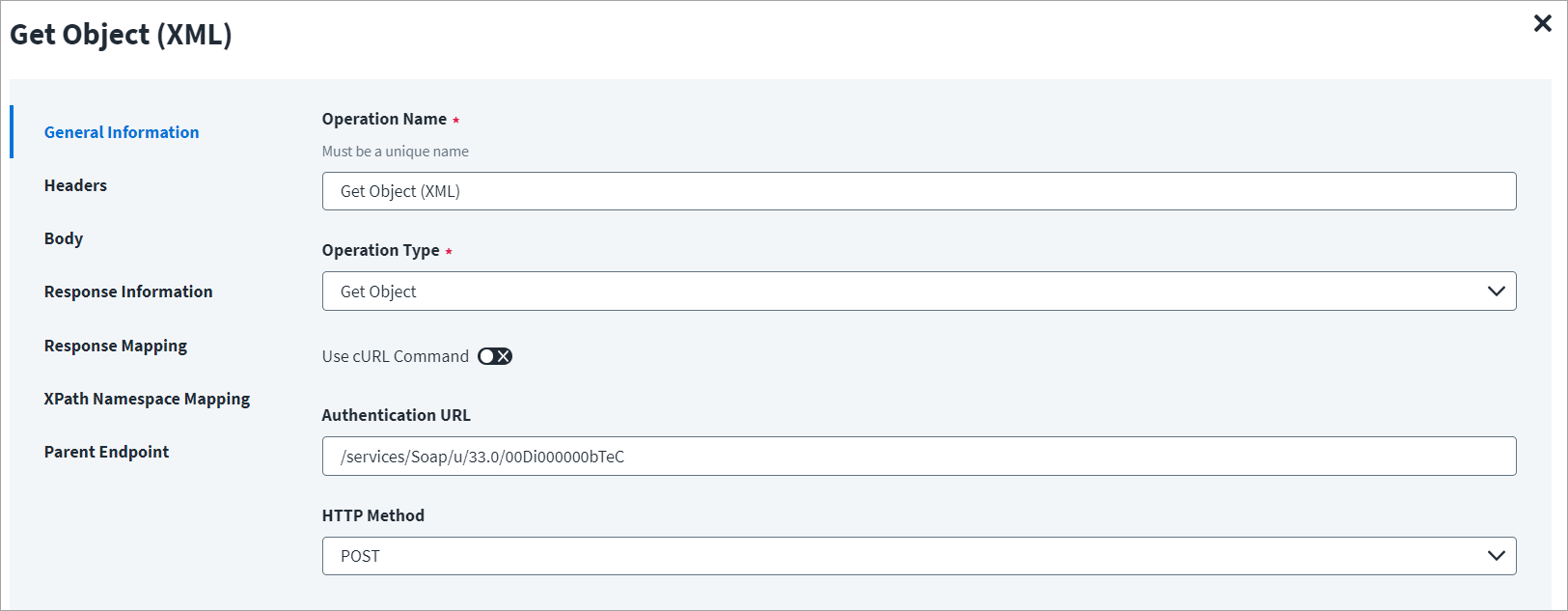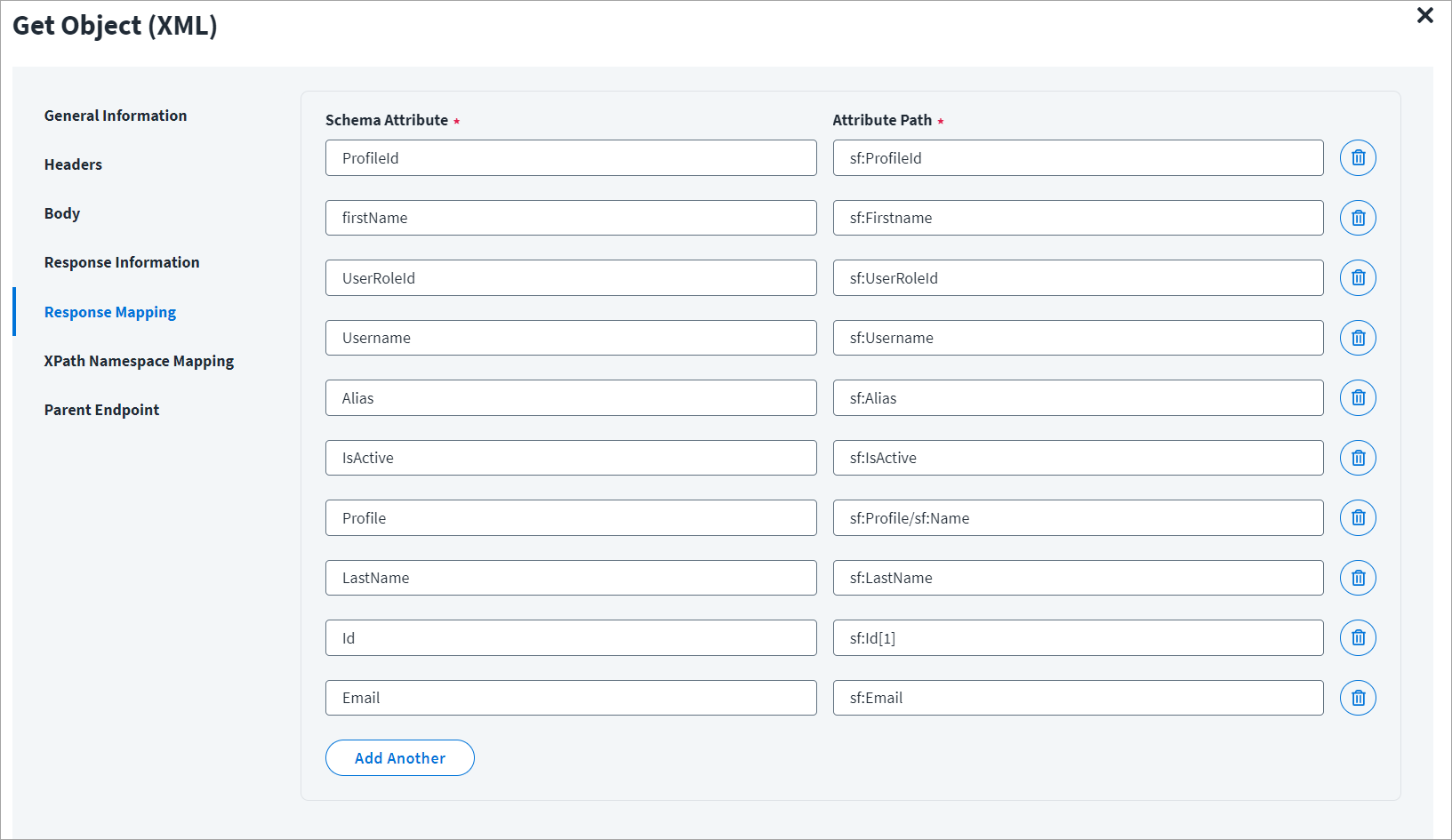Get Object
This topic provides an example of an XML response for a get object operation.
-
In the Operation Name field, enter Get Object (XML) as the operation name.
-
From the Operation Type drop-down list, select Get Object.
-
In the Authentication URL field, enter the URL specific to the get object.
-
In the HTTP Method drop-down list, select POST.

The Header has the data keys and their corresponding values. These key value pairs will be sent as part of the Header in the HTTP Request.

The HTTP body is used for posting the data with a request. The body has two data entry types, Form Data and Raw. The XML format does not support Form Data.
In the Raw field, enter the XML payload for the get object.
The $nativeIdentity$ signifies the AccountID (identity attribute) in the plan or during the get object operation. For example, nativeIdentity is used along with the following keywords:
-
getobject –
$getObject.nativeIdentity$ -
plan –
$plan.nativeIdentity$

The Root Path is the common path present in the XML response. The Success Code is the successful HTTP response code expected by the respective Web Service operation. By default, the success code is 2**.

Below is an example of a schema that is mapped to XML response, for more information refer to Configuration for Response.

The namespace xmlns is the default namespace for the example mentioned in this section, and it is represented as ns in the following screenshot.
